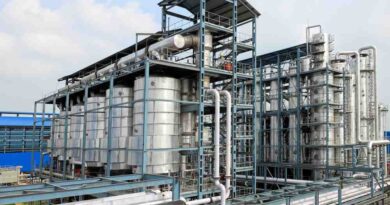Andhra Pradesh’s New CM Elect Is Sold on Renewables, with conditions
 No Smiles For Big Time Renewables
No Smiles For Big Time Renewables
In a wide ranging interview where he spoke about a host of issues, the incoming CM’s views on solar power are worth noting. Complimenting the central government for running the solar tenders in a very transparent way, YS Jaganmohan Reddy made it clear that it was one aspect he hoped to replicate in a big way, not just in solar energy, but across all contracts that ‘smelled’ of corruption. He was referring to the many reverse tenders that have been conducted to discover the best rates for solar power.
Claiming that existing rates of Rs 4.84 during regular hours, and almost Rs during peak hours were an anomaly when both solar and wind rates were as low as Rs 3 or order, he blamed the huge difference in final rates on corruption. That’s a view that might be debatable, considering how difficult, and the number of stakeholders involved at each stage of the power cycle. And going by Mr Reddy’s contention, Maharashtra should be the absolute den of corruption, with rates as high as Rs 9 in cases.
The issue, as Mr Reddy will discover, will come back to the PPA’s signed with thermal power plants, based on submitted costings for land, equipment, capital etc. Multiple state power regulators, besides the Central Electricity Commission itself, have barely made a dent to the one way increase in rates. Each stage of the power chain is also owned by a different stakeholder, be it the transmission firm, the final distribution firm, and of course, a separate generating firm. These multiple interests have made power sector reforms a tough task for every government at the centre, as the central government’s own UDAY scheme has shown.
| Category | Capacity |
| Thermal | 12290 MW |
| Combined Cycle gas and Diesel | 7967 MW |
| Hydro | 1797 MW |
| Solar | 2829 MW |
| Wind Energy | 4800 MW |
Andhra Pradesh Power Mix
With close to 7000 MW of installed capacity in solar and wind combined, it’s not like Andhra Pradesh has been a slouch in renewables. Compare this with 12290 MW of thermal capacity, and an additional 7900 MW of combined gas and diesel plants, there is clearly enough headroom for renewables to expand. Despite the already high tariffs, the states combined cycle power sector has been in disarray, mainly due to their unviability at even these rates.
Perhaps, a simpler way out for Mr Reddy would be to make Andhra a true open access power market, with a waiver of additional charges as far as possible. And a promise to stick to the policy for a clear period of time. One of the biggest issues with open access rules has been the constant tinkering by states, leaving this a market waiting to fulfil its potential.
Interestingly Andhra Pradesh itself came up with a new solar policy in January this year , that targets a minimum solar power capacity addition of 5,000 MW in the next five years in the state. The state’s Wind Power Policy-2018 followed later, with ambitious goals. On Wind Solar hybrid power too, the Andhra Pradesh government has a target to achieve 18,000 MW of renewable energy capacity by the financial year 2021-22, 10 percent of the national target. Thus, clearly, Mr Reddy will find no problems with the intent of the state’s renewable policy objectives, just the execution is where he might want to take a harder look. Beyond this, a clear open access policy has the potential to add a clear 2000 MW to the state’s solar or even Hybrid installations. All this new power, which will be at a generation cost of Rs 2.80 to Rs 3.30 by most estimates, means the state might eventually transition on its own to a lower peak power cost, as older thermal PPA’s end, or some of the more inefficient plants even shut down.



